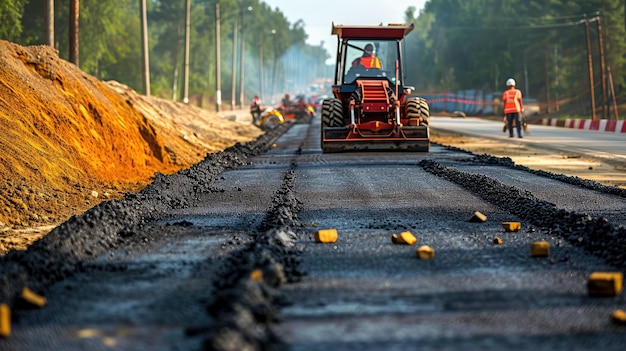Contact Us
RoadVision AI
Private Limited
Office No. 308 & 310, B Block
Ansal Chamber - 1, Bhikaji Cama Place,
Near Engineers India Limited (EIL) Bhawan, New Delhi - 110066
© 2024 | RoadVision AI | All rights reserved
India's road network, one of the largest in the world, serves as the backbone of the nation’s economy, connecting urban hubs to rural hinterlands. To ensure the quality, safety, and longevity of roads, the Indian Roads Congress (IRC) has laid down standardized codes that serve as the bible for road engineers and planners. One such code is the IRC Code 39-1986, which outlines crucial specifications for road construction and maintenance. This blog delves into the significance of the IRC Code, its critical provisions, and how it shapes India’s road infrastructure.

The IRC Code 39-1986, titled "Tentative Guidelines for the Design of Flexible Pavements," is a comprehensive document providing guidelines for designing flexible pavements in India. Flexible pavements are roads made of multiple layers, including subgrade, sub-base, base, and surface courses, designed to withstand varying traffic loads and climatic conditions.
This code is crucial for:
Here are some of the essential aspects covered in the IRC Code 39-1986:
The code emphasizes the need to analyze traffic patterns to design roads that cater to expected loads. It categorizes traffic based on axle loads, ensuring the pavement structure can handle both present and future demands.
The subgrade is the foundation of any pavement. The IRC Code highlights the importance of:
Flexible pavements consist of multiple layers, each serving a specific purpose:
The IRC Code provides detailed guidelines for thickness, material selection, and compaction requirements for each layer.
The document specifies the types of materials suitable for different pavement layers. For instance:
Proper drainage is critical for pavement longevity. The IRC Code provides guidelines for:
To ensure durability, the code outlines best practices for maintenance, including:
Adhering to the IRC Code offers multiple benefits, including:
While the IRC Code provides clear guidelines, implementing them on the ground comes with challenges:
Modern technology can bridge many gaps in implementing IRC Code guidelines. RoadVision AI offers advanced solutions like:
The IRC Code 39-1986 remains a cornerstone in the design and maintenance of flexible pavements in India. By adhering to its guidelines, road engineers can ensure the construction of safe, durable, and cost-effective roads. However, to fully realize its potential, leveraging technology and addressing implementation challenges is key.
RoadVision AI is revolutionizing road infrastructure development and maintenance by leveraging cutting-edge AI in road safety and computer vision technology. Through advanced digital twin technology, the platform performs comprehensive road safety audits, enabling early detection of potholes, cracks, and other surface issues, ensuring timely repairs and improved road conditions. It also enhances traffic surveys by providing data-driven insights to address challenges like traffic congestion and optimize road usage. With a focus on building smart roads, RoadVision AI ensures full compliance with IRC Codes, empowering engineers and stakeholders to reduce costs, minimize risks, and improve the overall road safety and transportation experience.